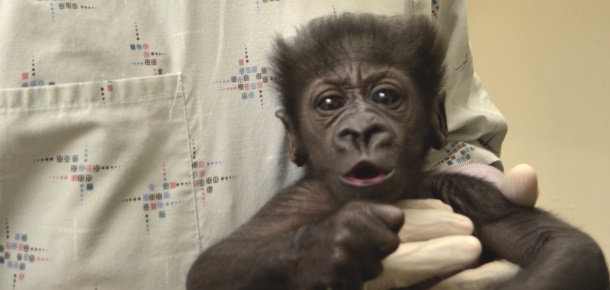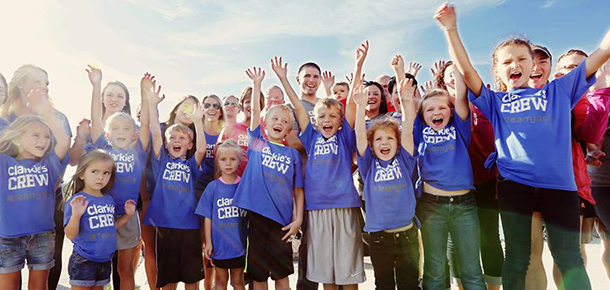Last February, I received a phone call with a request for a favor. The caller was Dr. Uma Kotagal, and she was in New York, where she had a layover on her way to a conference. She’d just gotten a call from the head curator of the primates program at the Cincinnati Zoo and Botanical Garden informing her that their team had been chosen to care for an infant Western Lowland gorilla who had been rejected by her mother shortly after birth.
The female infant was arriving that day and the team hoped Dr. Kotagal would be available to examine her and make recommendations for the gorilla’s care. Since she wasn’t available, she asked if I would be willing to go in her place. I was completely intrigued by the idea and said yes without hesitation.
The call from the zoo to Dr. Kotagal wasn’t at all unusual. She has had a strong relationship with the zoo, and the primates program in particular, for decades. She started working with the team when they had an active gorilla breeding program and had many gorilla births. Her expertise as a pediatrician, and specifically a neonatologist, was requested because many concepts from human newborn medicine may be applied to young primates as well.
When an animal is born in the wild, the mother takes care of the baby. If not, the baby animal is at significant risk. When an animal is born in captivity, the ideal scenario is also for the mother to care for the baby. If all goes well, veterinarians and keepers need not intensively manage the baby’s day-to-day care. But when there is a situation that necessitates separation of the infant primate from the mother, then our pediatric expertise can help.
Dr. Kotagal was able to give me the information that I needed over the phone. She has amassed a wealth of knowledge about primate neonates, the most important of which she shared with me. She also assured me that my own clinical knowledge and expertise would be more than enough to be able to confidently advise the team caring for the baby gorilla who had been named Gladys.
The following day, after an evening of internet searches to learn as much about Western Lowland Gorillas as I possibly could, I met Gladys and her care team.
Her nutrition was our main concern and we were able to find the right formula for Gladys and help her achieve the growth and development that she needed in order to make the next steps in what the team at the zoo called her “gorillafication.”
Once Gladys was growing and thriving, my involvement with her medical care decreased until they no longer needed me. The process by which Gladys was raised through infancy is absolutely amazing and I hope you’ll read about her care, her surrogate gorilla mom, and her first outdoor time with her new family.
She is now a part of the gorilla troop at the Cincinnati Zoo. She has a whole surrogate family and lives with them 100% of the time. I am honored to have been even the smallest part of her success story.
And while I wasn’t sure my services would be needed at the zoo again any time soon, I was called this past winter to examine a newborn bonobo chimpanzee and then again early last week when the team learned that baby gorilla Kamina was on her way.
Much like Gladys, my small but critical role with Kamina will be in assessment of her health and growth and a plan to help her gain adequate weight. Infant primates are really remarkably similar to human infants, and we often go through this exact same process with a human baby who isn’t growing in an expected manner.
I’m excited to have the opportunity to work with the team at the Cincinnati Zoo and Botanical Garden again. It is an organization with a clear aim and team members work together seamlessly to achieve that singular objective. They value each other’s input and have shown that they value my input and Dr. Kotagal’s as she continues to be an important part of this work.
Every interaction with these tiny primates is also a learning opportunity for me and I’m honored to be a part of each of their stories.



